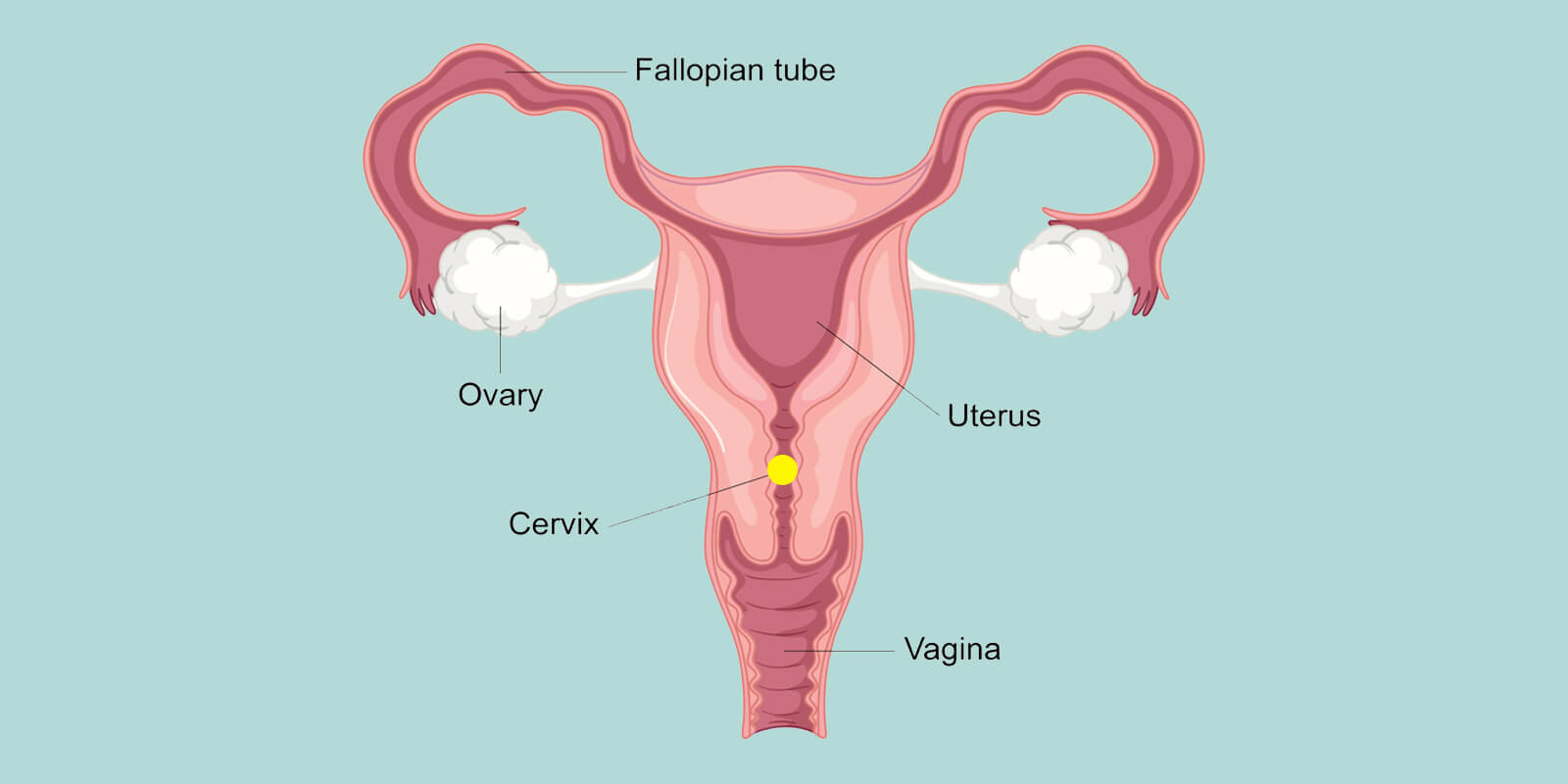January is Cervical Cancer Awareness Month and during this time, organizations like the World Health Organization (WHO) spread the word about cervical health. It's an amazing opportunity to highlight the significance of preventing cervical cancer through awareness campaigns, discussions on HPV vaccinations, and the promotion of regular screenings.
Femometer are dedicated to supporting women's health, so we're sharing essential insights about cervical cancer—its symptoms, causes, and treatment. We urge you to join us in spreading this knowledge among your friends and loved ones as we strive together to "Learn, Prevent, Let Awareness Grow." Your help in raising awareness could make a vital difference in safeguarding women's health.
What Is Cervical Cancer?
1. What Is Cervix?

The cervix is a crucial part of a woman's reproductive system located at the lower end of the uterus, positioned at the top of the vagina. It has a cylindrical shape and plays a vital role during menstruation, pregnancy, and childbirth. This small passage links the uterus to the vagina and has a tiny opening allowing menstrual blood to exit the uterus and enabling sperm to enter during conception. Understanding the cervix's location and function is pivotal in comprehending cervical health and the prevention of cervical cancer.
2. Symptoms of Cervical Cancer
Early Stage Symptoms:
• Abnormal Vaginal Bleeding: Bleeding between periods, after menopause, or post-sexual intercourse.
• Pelvic Pain: Dull, aching pain or discomfort in the pelvis.
Mid Stage Symptoms:
• Pain During Intercourse: Discomfort or pain during sexual activity.
• Unexplained Weight Loss: Sudden weight loss without any apparent cause.
• Fatigue: Persistent tiredness or lack of energy.
• Swelling of One Leg: Swelling due to the blockage of blood flow from the legs back to the heart (known as deep vein thrombosis).

Later Stage Symptoms:
• Severe Pelvic Pain: Intense and persistent pain in the pelvic region.
• Leaking of Urine or Feces from the Vagina: Incontinence issues due to the spread of cancer to nearby tissues.
• Bone Pain: Pain in the back or legs due to cancer spreading to the bones.
• Anemia: Low red blood cell count, leading to weakness and fatigue.
• Loss of Appetite: Significant decrease in appetite accompanied by unintended weight loss.
3. Causes of Cervical Cancer
Some of the causes of cervical cancer include:
• Human Papillomavirus (HPV): This is the primary cause of cervical cancer. HPV is a common sexually transmitted infection. Certain strains of HPV, particularly types 16 and 18, are considered high-risk because they are more likely to cause cervical cell changes that can lead to cancer.
• Tobacco Use: Smoking and using tobacco products can increase the risk of developing cervical cancer. The harmful chemicals in tobacco can damage cervical cells, making them more susceptible to HPV infections.
• Poor Hygiene: Maintaining good personal hygiene practices, including regular bathing and proper genital area cleaning, is essential to prevent infections that could potentially lead to cervical cancer.
• Immunosuppression: Conditions that weaken the immune system, such as HIV/AIDS or the use of immunosuppressive medications following an organ transplant, may increase the risk of persistent HPV infections that can progress to cervical cancer.
These causes, particularly persistent HPV infections, are major contributors to the development of cervical cancer. Practicing safe sex, receiving the HPV vaccine, avoiding tobacco products, and maintaining good overall health can significantly lower the risk of developing cervical cancer. Regular screenings and early detection through Pap smears or HPV tests are crucial for early intervention and successful treatment.
4. How Will Cervical Cancer Affect People's Life?
Cervical cancer outcomes can vary widely based on various factors, including the stage at diagnosis, treatment options, overall health, and individual response to treatment. Here are the potential outcomes:
• Early-Stage Cervical Cancer: When cervical cancer is detected at an early stage (localized to the cervix), the chances of successful treatment and cure are higher. Treatments such as surgery, radiation therapy, or a combination of both can often eradicate the cancer with a high probability of long-term survival and a good quality of life.
• Advanced-Stage Cervical Cancer: In cases where cervical cancer has spread beyond the cervix to nearby tissues or other organs (advanced or metastatic stage), treatment becomes more challenging. Survival rates and outcomes may vary, depending on the extent of the spread and the response to treatments like chemotherapy, radiation, and targeted therapy.
• Recurrence: There's a risk of cervical cancer returning after successful treatment, especially if the cancer was at an advanced stage at the time of diagnosis. Regular follow-up appointments and screenings are essential to monitor for any signs of recurrence.
• Palliative Care: For advanced-stage cervical cancer that has spread extensively and is not responsive to treatment, palliative care focuses on relieving symptoms, managing pain, and enhancing the patient's quality of life.
It's important to note that every case is unique, and treatment plans are personalized based on various factors. Regular screenings, vaccination against HPV, and adopting a healthy lifestyle can significantly reduce the risk of cervical cancer and improve outcomes if cancer is detected early.
How to Prevent Cervical Cancer?
1. HPV Vaccination:

Vaccination against the human papillomavirus (HPV) plays a pivotal role in cervical cancer prevention. Over 90% of cervical cancer cases are attributed to HPV infections, particularly high-risk strains like HPV 16 and 18. The HPV vaccine offers protection against these high-risk strains, significantly reducing the risk of developing cervical cancer. It's typically administered to young individuals, ideally before they become sexually active, offering optimal protection. Discussing vaccination options with healthcare providers can help in understanding the benefits and importance of the HPV vaccine in preventing cervical cancer.
2. Early Detection:
Early detection is crucial in managing cervical cancer. Regular screenings such as Pap smears and HPV tests can detect abnormal cell changes in the cervix, enabling timely intervention. These tests aid in identifying precancerous or cancerous cells even before symptoms manifest. Timely detection enhances the chances of successful treatment and improved outcomes. Engaging in routine screenings as recommended by healthcare professionals is vital for early detection and preventive measures.
3. Modifiable Risk Factors:
Identifying and addressing modifiable risk factors can significantly reduce the likelihood of developing cervical cancer. Lifestyle factors like smoking or using tobacco products are among the modifiable risk factors. Ceasing or avoiding tobacco use can lower the risk of cervical cancer. Additionally, practicing safe sex, maintaining good genital hygiene, and attending regular gynecological check-ups are essential in reducing the risk of exposure to HPV and other potential causes of cervical cancer. Raising awareness about these modifiable risk factors empowers individuals to take proactive steps in reducing their risk of developing cervical cancer.
Treatments of Pre-Cancerous Conditions
Pre-cancerous conditions related to cervical cancer primarily involve changes in the cells of the cervix that have the potential to progress to cancer. These changes are often detected during routine cervical screening tests like the Pap smear or HPV test. Pre-cancerous conditions may include:
1. Cervical Dysplasia (Cervical Intraepithelial Neoplasia - CIN):
This refers to abnormal changes in the cells of the cervix that can be mild, moderate, or severe. These changes can sometimes resolve on their own but may require treatment to prevent them from developing into cervical cancer.
2. Human Papillomavirus (HPV) Infection:
Persistent infection with high-risk HPV strains is a major risk factor for cervical cancer. Although HPV infections often resolve without causing harm, persistent infections can lead to pre-cancerous changes in cervical cells.
3. Cervical Polyps:
While not always pre-cancerous, some types of cervical polyps can have abnormal cells that may potentially lead to cancer if left untreated.
Remember, early detection and preventive measures are crucial in preserving your health and well-being. Don't hesitate to consult healthcare professionals for guidance and support in maintaining cervical health. Your health matters, so take the necessary steps to safeguard it.

This article is the original creation of Femometer. All rights reserved by Femometer Inc. To reproduce, distribute, or reference the content, please reach out to us in advance to prevent any potential legal issues. Copyright © Femometer Inc.










